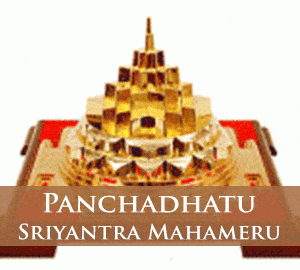Foreign Invasions
Invasion of Nadir Shah
As a natural sequel to the notorious incapacity of the unworthy descendants of Babur, Akbar and Aurangzeb, and the selfish activities of the nobility, the Mughul State grew corrupt and inefficient. It lost its prestige not only within India but also outside it. The country, famous for its riches, which excited the cupidity of external invaders from time immemorial, became exposed to the menace of a foreign invasion, as had been the case during the dismemberment of the Turko-Afghan Sultanate. This time the invader came not from Central Asia, but from Persia, which had already snatched away Qandahar from the Mughuls. The weak defence of the north-west frontier (the most vulnerable point in the Empire), since the time of Aurangzeb, offered a splendid opportunity to the Persians, when they had become free from internal troubles by 1736, to make a daring push into the heart of Hindustan under the bold adventurer Nadir Shah. The feeble attempts of Nasir Khan and Zakariya Khan, governors of Kabul and the Punjab respectively, to guard their provinces were of no avail, as their appeals to the Delhi court for help passed unheeded, owing to the machinations of the leaders of the rival parties who fought for power in the court. Their defence in condition has been thus described by Ghulam Husain, one of the most important Indian writers of the mid-eighteenth century: “The roads and passes being neglected, everyone passed and repassed, unobserved; no intelligence was forwarded to court of what was happening; and neither Emperor nor Minister ever asked why no intelligence of that kind ever reached their ears.”
Nadir Shah, born of a humble family and originally a robber chief, was, however, schooled by hardships and privations, which gave him considerable valour and ability and a restless energy. He helped in the recovery of Persia from the hands of the Afghans, who had wrested it from Shah Husain Safari in A.D. 1722, and entered the service of its restored ruler, Shah Tahmasp, son of the deposed king, Shah Husain, in A.D. 1727. Through the incompetence of his master, Nadir became the de facto ruler of the State and eventually deposed him in 1732. On the death of Shah Tahmasp’s infant son and successor, Nadir became the ruler of Persia in reality as well as in name.
Nadir commenced his march towards India in A.D. 1738. The alleged violation of promises by Muhammad Shah, and the ill-treatment of his envoys by the Delhi court, served as the cause for his invasion. As the Mughuls had sadly neglected the defenses of the north-west frontier, Nadir easily captured Ghazni, Kabul and Lahore in A.D. 1739. The whole province of the Punjab was thrown into great confusion and disorder, while the pleasure loving Emperor and, the carpet-knights of his court, whose conduct during Nadir’s invasion “forms a tale of disgraceful inefficiency amounting to imbecility”, did nothing to oppose him. They could think of shaking off their lethargy only when the Persian army had arrived within a few miles of Delhi. The imperial troops, then marched to check the advance of the Persians and encamped at Karnal twenty miles north of Panipat; but they were routed in February, A.D. 1739. The vanquished Emperor of Delhi, almost at the mercy of Nadir as his captive, hurried to sue for peace.
The victorious Nadir and the humiliated Emperor of Delhi together entered Delhi, where the former occupied Shah Jahan’s palace chambers by the Diwan-i-Khas. At first there was no disorder in the imperial city, but a rumour of Nadir’s death, spread by some mischievous persons, gave rise to a tumult in which some Persian soldiers were slain. Nadir at first merely took steps to quell the disturbance, but the sight of his murdered soldiers infuriated him and, burning with feelings of revenge, he ordered a general massacre of the citizens of the doomed city of Delhi. A contemporary account tells us that the slaughter lasted from eight in the morning till three in the afternoon. “Within the doomed areas, the houses were looted, all the men killed without regard for age, and all the women dragged into slavery. The destroyers set fire to many houses, and several of their victims, both dead and wounded, Hindus and Muhammadans, were indiscriminately burnt together.” The survivors, blockaded within the city, were reduced to extreme misery, for, besides plundering the marketplaces, Nadir caused the granaries to be sealed up, placed guards over them and sent detachments to plunder the villages. The Persian soldiers deliberately tortured the principal citizens for money, and three crores of rupees were realized by force from the helpless and starving inhabitants of the wretched city, which presented for eight weeks a dreadful scene of arson and carnage. At the earnest appeal of Muhammad Shah, Nadir at last called off his soldiers, but peace was not restored till the invader left the city for his own country. Muhammad Shah retained the throne, but he had to sustain irreparable losses. The ruthless conqueror carried away all his crown jewels, including the famous Koh-i-nur diamond, the costly Peacock Throne of Shah Jahan, and the celebrated illustrated Persian manuscript on Hindu music written under the command of the Emperor Muhammad Shah. According to the estimate of Nadir’s own secretary, he exacted at Delhi fifteen crores of rupees in cash, and a vast amount in jewels, apparel, furniture and other valuable articles from the imperial store-house. He also took away with him 300 elephants, 10,000 horses, and the same number of camels. Thus the Persian invasion entailed a heavy economic drain on the resources of the decadent Delhi Empire. The trans-Indus provinces (Sind, Kabul and the western parts of the Punjab) had to be surrendered to the Persians. Further, the Mughul Empire lost the little prestige that it had still retained and its decline now became patent to the world. In short, Nadir’s invasion left it “bleeding and prostrate”. Internally exhausted, it could get no time for recuperation and revival, as the invasion of 1739 set a precedent for further invasions from outside and Ahmad Shah Abdali invaded India as the successor to Nadir’s empire.
Invasions of Ahmad Shah Abdali
After the assassination of Nadir in 1747, one of his officers named Ahmad Shah, an Afghan chief of the Abdali clan, rose to power and succeeded in establishing himself as the independent ruler of Afghanistan. He styled himself Durr-i-Durran, “the pearl of the age”, and his clan was henceforth known as the Durrani. Ahmad Shah Abdali, while accompanying Nadir to India, had seen with his own eyes “the weakness of the Empire, the imbecility of the Emperor, the inattentiveness of the ministers, the spirit of independence which had crept among the grandees.” So after establishing his power at home he led several expeditions into India from A.D. 1748 till A.D. 1767. These were something more than mere predatory raids. They indicated the revival of the Afghans, outside and within India, making a fresh bid for supremacy on the ruins of the Mughul Empire. As a matter of fact, the Afghan bid for supremacy was an important factor in the history of India during a considerable part of the eighteenth century. Ahmad Shah Abdali must have entertained the desire of establishing political authority over at least a part of India, though there were other motives, as Elphinstone points out, which led him to undertake these expeditions. He sought to consolidate his authority at home by increasing his reputation through successful foreign adventures, and he also hoped to utilise the booty derived from his Indian campaigns in defraying the expenses of his army and in showering favours and rewards on the Afghan chiefs.











